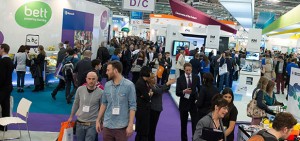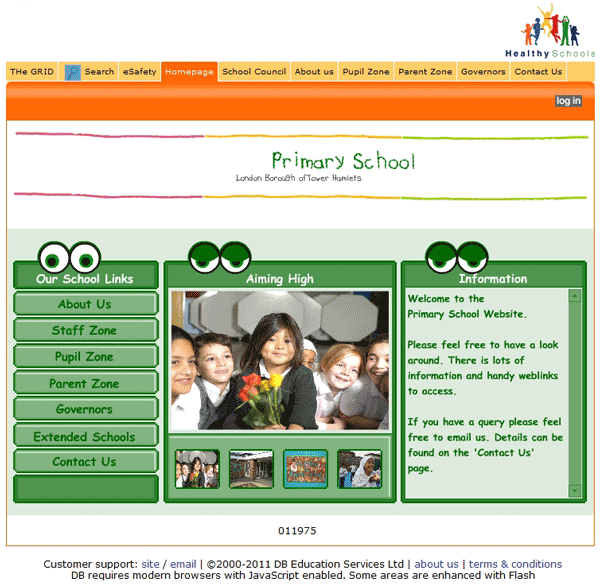BETT 2015: five of our favourite stands
 BETT 2015 seemed particularly busy this year; we had a good look around and picked out 5 stands that caught our eye.
BETT 2015 seemed particularly busy this year; we had a good look around and picked out 5 stands that caught our eye.
Oddizzi
www.oddizzi.com is a fantastic geography website packed full of videos, photos and facts about places around the world. With sections on rivers, mountains, weather and places plus much more, Oddizzi will keep you well resourced for a very long time. Whether you use the resources in Geography lessons or for class discussions/literacy starters or PSHE, there is plenty to look at and explore. There are also questions and tasks added throughout to give teachers plenty of discussion starters and homework ideas. The founder, Jenny, was a primary teacher with a passion for Geography and global citizenship. She recently went on a safari in Africa and has some amazing photos and videos on the site that she has collected first hand. She also drafts in teachers and travel writers who are equally passionate and off on their holidays to help her to build content. As part of the Oddizzi subscription you can also use ClassPals which enables you to send virtual letters and postcards to schools across the globe. You can add your own photos and set up regular pen pals or link with schools for specific topics. Brand new to Oddizzi this year, and launched at BETT, is the addition of tests for a variety of topics with more being added. This enables you to track the pupils’ progress and knowledge over a number of areas. Oddizzi may not be free but it is certainly well priced for schools and worth a look. You can ask for a free trial for your school to get an idea of what is on offer.
Now Press Play
http://nowpressplay.co.uk/ were invited to take part in the new BETT Futures zone for 2015 – sponsored by the Education foundation. They took this opportunity with both hands and it was hard not to include them given their dedication to tweeting everyone and being enthusiastic and excitable whenever anyone came to talk to them! They are clearly very interested in what they do and are keen to get the message out. Press Play is an immersive learning experience. Students are given wireless headphones to wear and they recommend going into the hall although a classroom can be big enough. Students listen to immersive stories acted out and they are given a role to play and they follow instructions telling them what to do and where to go. We experienced a scene where the students are on board the Titanic after it has hit the iceberg. They find a stowaway and are trying to get through the icy water below decks to survive the sinking. During the experience the instructions then tell them to complete questions in a booklet that is provided with the lessons. This are differentiated so that students can have different questions but not realise as they are simply told to complete questions “9-12” for example. The Titanic story is used for a maths lesson. There are currently 45 lessons in total for KS2 and these range from grammar lessons through to topic work and PHSE. The subscription costs or outright costs are high for this product but if you can arrange sharing with one or two other schools could be well worth it. Although I originally thought this could be done with just a tape player, it is quickly clear when watching the students that the headphones enable them to really get involved and ignore anything else happening around them.
Classroom Monitor
http://www.classroommonitor.co.uk/ is a pupil tracking, progress and monitoring system with the ability to report directly to parents. The interface is very easy to use and it is cloud based so can be accessed from anywhere, with each teacher or staff member having their own secure login. As well as tracking students against performance foci from Early Years to Key Stage 3, you can attach evidence to their achievements – photos, videos, pieces of work and more – and also send emails to parents containing their results and evidence as often as you would like. Everything is controlled from school level – from which group you want to set up to how often to report. There is a section for making data analysis easy with ready made graphs and charts so that you are always ready for SLT meetings and Ofsted inspections. Settings within the markbooks allow you to use assessment to inform teaching on a regular basis too, allowing you to easily see which targets need to be covered and which children need intervention in each area. You can opt to use one of the many frameworks already included or add your own curriculum statements. If you are working with a group of schools you can even log in at high admin level to see data across the schools and compare. Classroom Monitor is best used for formative assessment but you can also input summative data and compare the two. All subject areas are covered and they have very cleverly teamed up with the Rising Stars Progression Framework to help schools with ‘life after levels.’ They also partner with the 2Simple 2 Build a Profile app – allowing Early Years teachers to upload photos and evidence directly from the app on their phone/tablets. All round the best tracking software we have seen and well worth a closer look.
Blue Bot
TTS recently launched the new Blue-Bot, which is the latest in the BeeBot family of floor robots from TTS. The Blue Bot has been designed with the new primary computing curriculum in mind and is a very exciting product. The Blue-Bot has a see through shell so children can see the circuit boards and inner workings. It lights up blue but the name actually comes from the fact that this is a Bluetooth enabled device. It can pair with an Android or Apple device so that children can programme the robot from the free accompanying app (available now in Apple Store but not until end of March in Google Play for Android) and can also debug their programme on the screen, a huge step forward from the old BeeBot where children could not see the programme after he had run its course. Miles Berry was speaking about how the programming element of the computing curriculum was not there because all children should be programmers but more so that they had an understanding of how the (technology) world works. We give Early Years children building blocks so that they understand this and the Blue-Bot helps us to understand more about how computers and the programming world works. There are not many in the country yet but we hear the Blue-Bots are being shipped over very soon. At £65 roughly each they are not cheap but a great investment for any Early Years/KS1 setting in my view. The app even allows you to take a photo to create your own background to move the robot around AND the Blue-Bot can turn in 45 degree turns unlike the old 90 degree angled BeeBot! A great step forward for an old school favourite.
Fiction Express
On the Friday of BETT, authors Alex Woolf and Louie Stowell gave a talk on the BESA stand about writing for Fiction Express. Fiction Express is a subscription service for schools. You pay £249 plus VAT for the year for whole school access. So this could be very cheap or very expensive depending on your school size! The premise is fantastic though. Each author writes a chapter of their story and then gives the children 4 possible options of where the story could go next. The children can then vote and the author then has seven days to write the next instalment of the story based on the most popular choice. The authors noted that children tend to be kinder than you would think and often choose the safe. easy option and definitely never go for anything that may hurt the hero. This is a challenge for the writers as the stories often go in very different ways than they had envisaged but the seven day deadline made it a very exciting type of challenge. Children love the immediate response of getting a new instalment after just seven days and the authors will often leave blog comments for students so they have a real dialogue with working authors on a regular basis – a very rare experience which keeps them very engaged. So if you have a lot of reluctant readers and writers at school make sure you sign up and get involved. Teacher ideas including asking students who voted for a different chapter to the most popular one to write the next chapter of their story themselves so that they can follow the story they had in mind!













